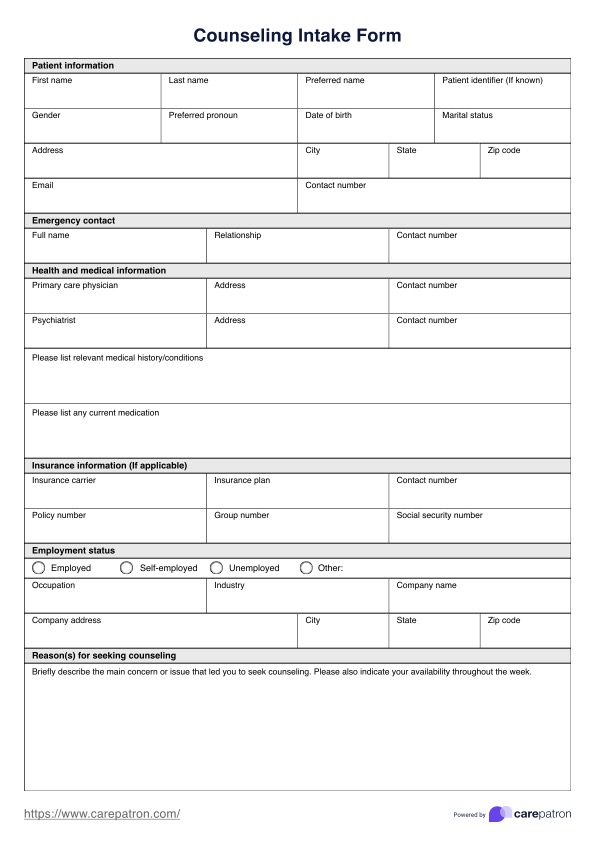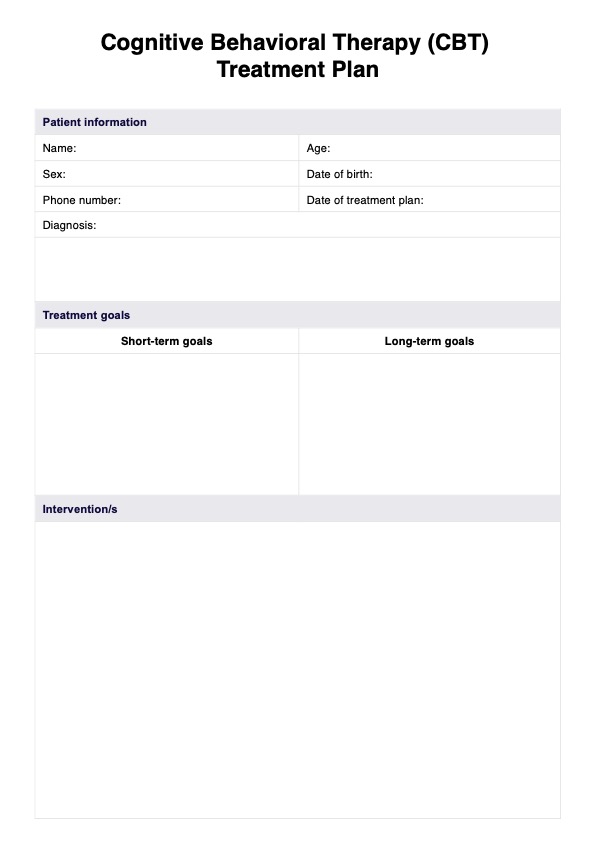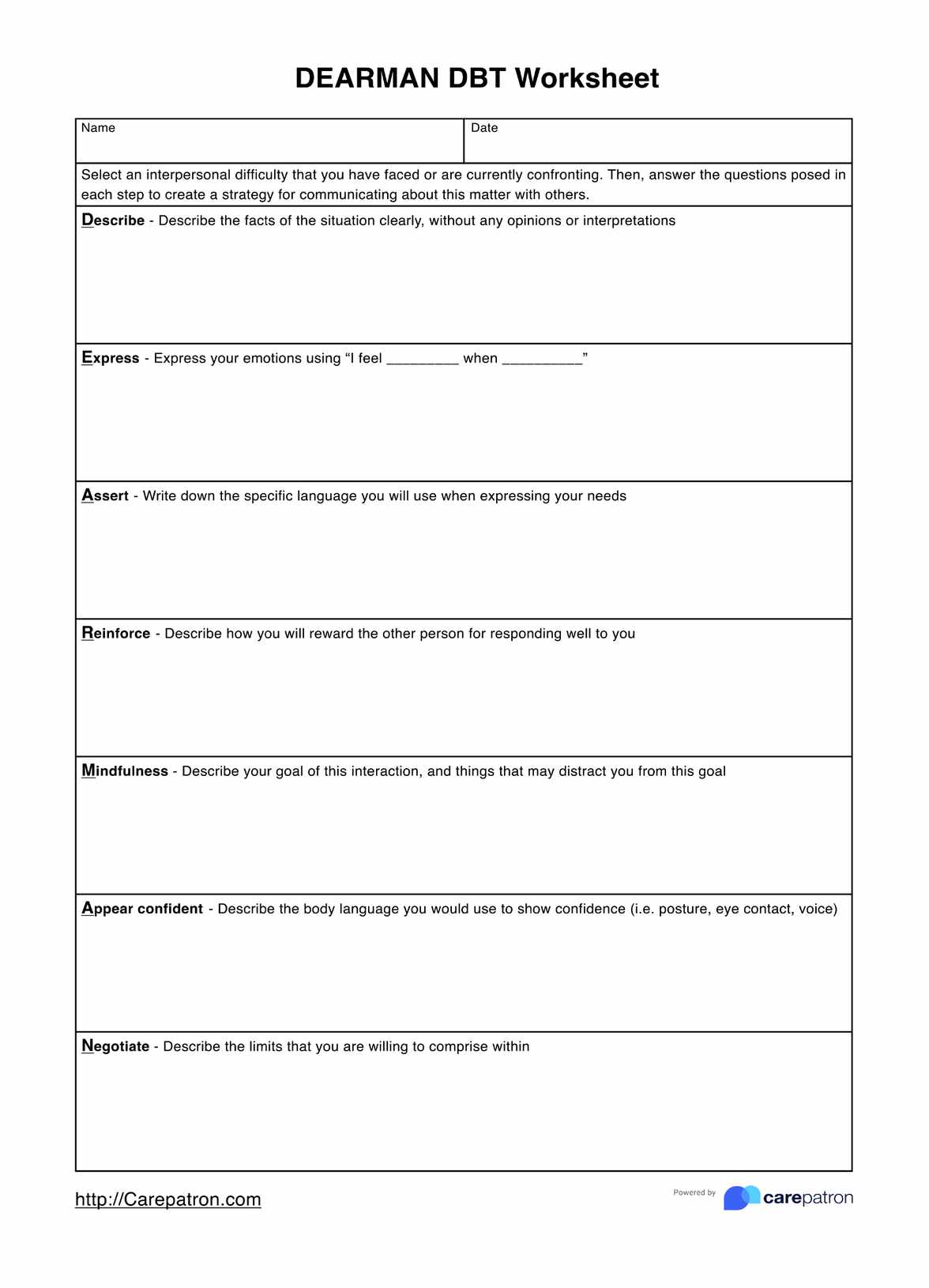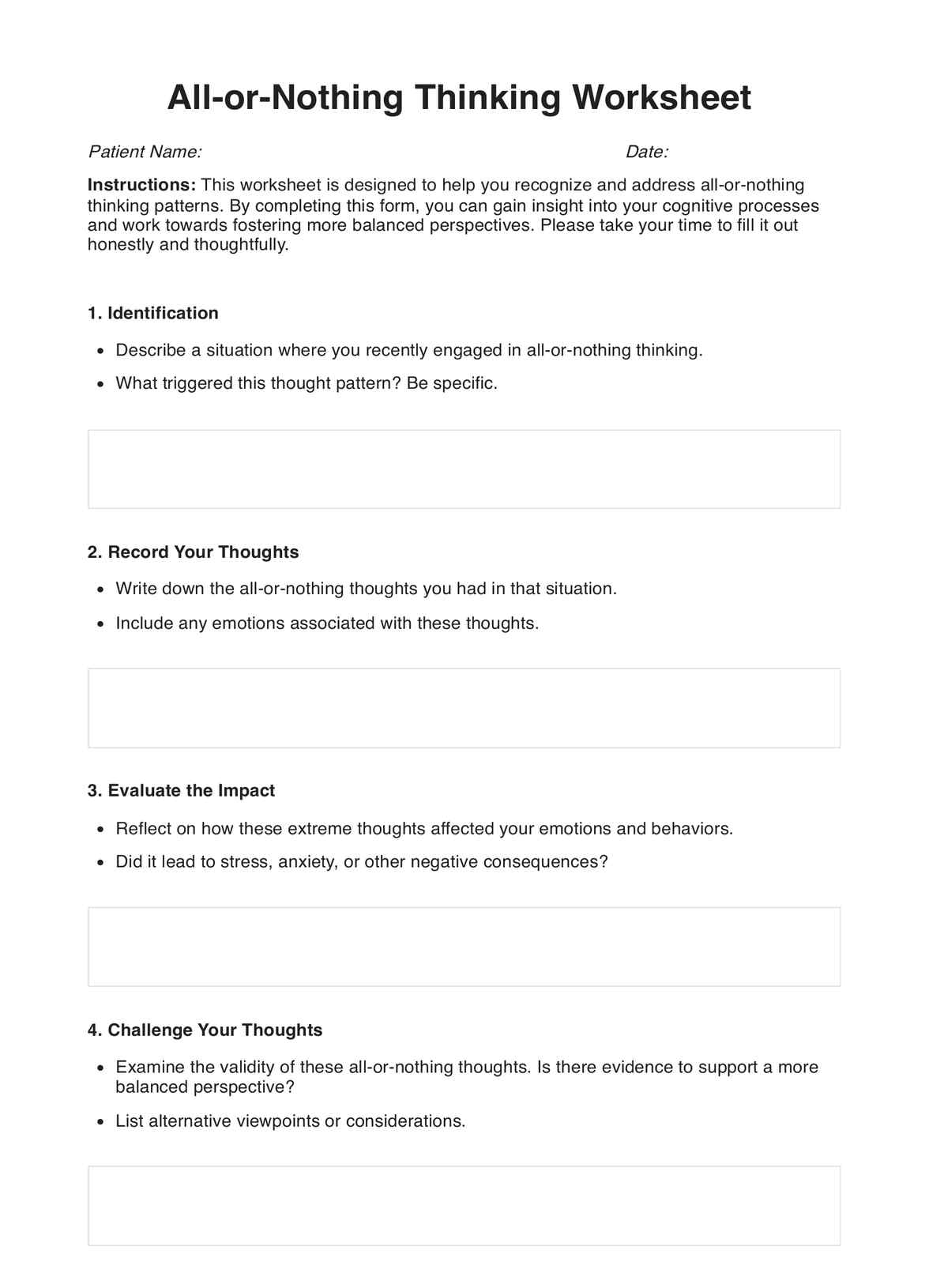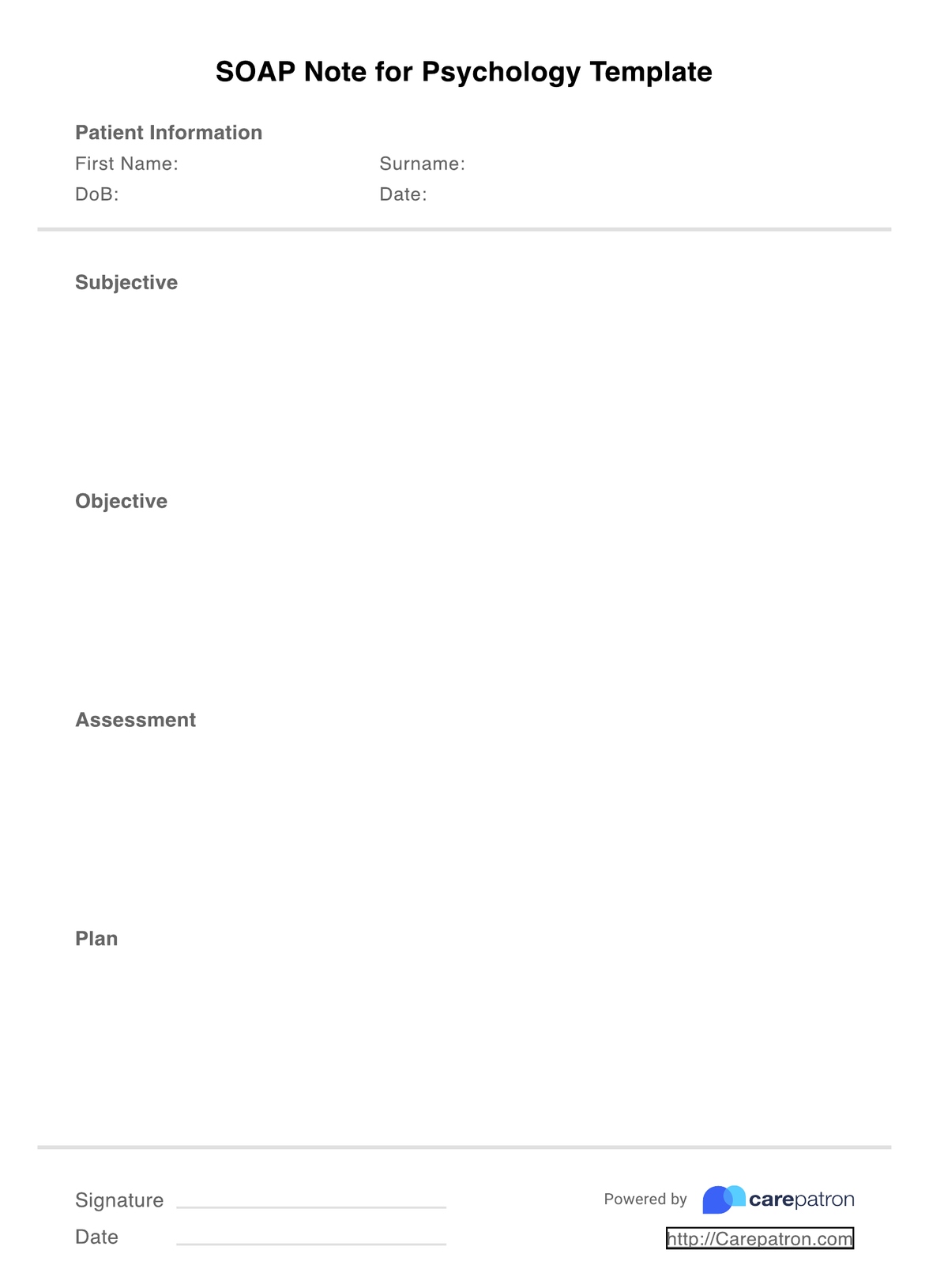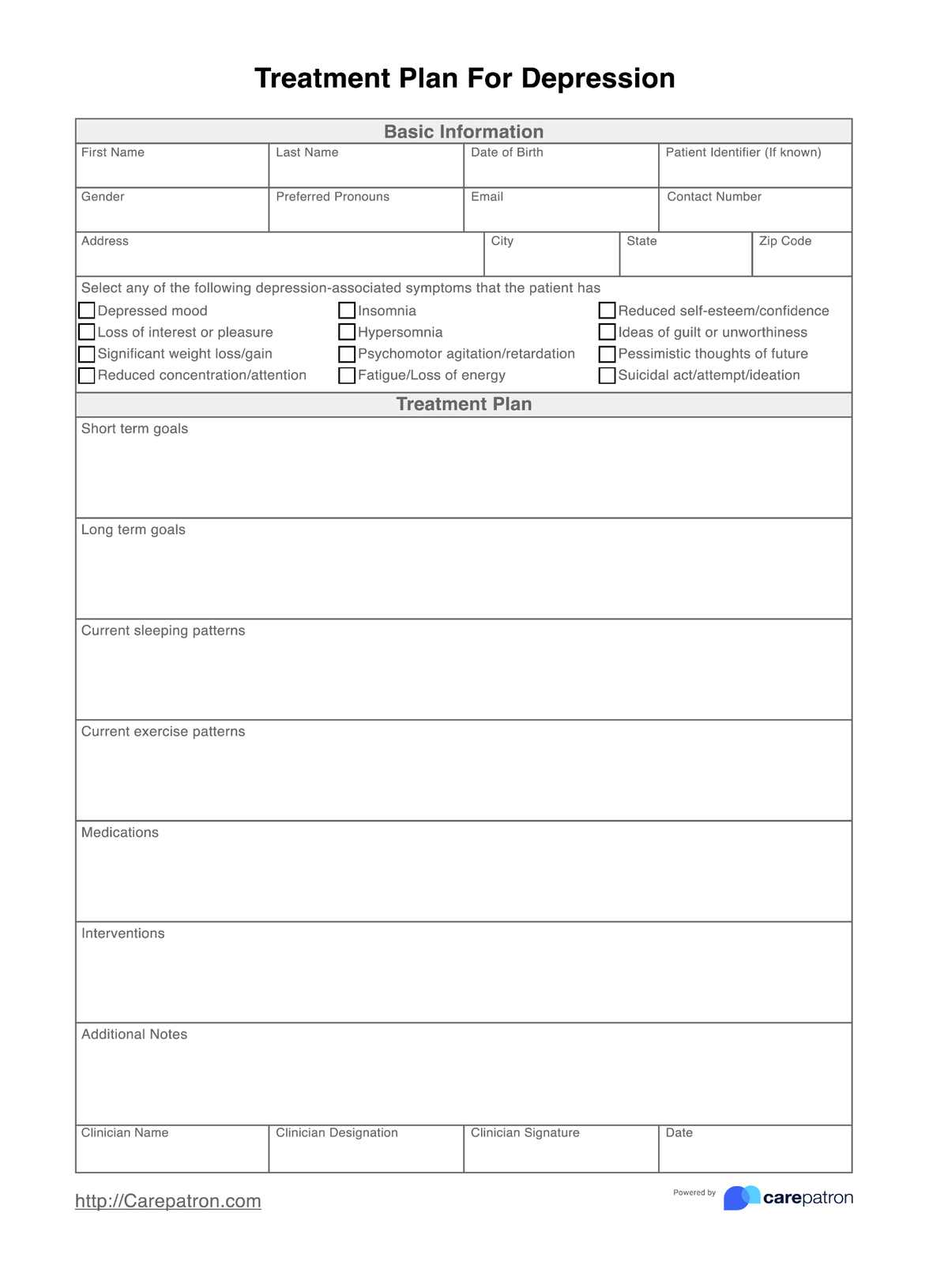Observing and Describing Emotions DBT Worksheet
Enhance emotional awareness with DBT worksheet: Observe and describe emotions effectively. Develop self-insight today.


What is Dialectical Behavior Therapy?
Dialectical Behavior Therapy (DBT) is a comprehensive therapeutic approach designed to help individuals effectively manage their emotions, improve interpersonal relationships, and develop coping skills for dealing with distressing situations. Developed by Dr. Marsha M. Linehan, DBT combines cognitive-behavioral techniques with elements of mindfulness and acceptance strategies.
At the core of DBT is dialectics, which acknowledges the interplay between seemingly opposing forces, such as acceptance and change. DBT aims to balance accepting oneself and fostering personal growth and change. It is particularly effective for individuals who struggle with intense emotional reactions, impulsivity, self-destructive behaviors, and challenges in interpersonal interactions.
One of the critical components of DBT is emotional regulation, which focuses on helping individuals identify, understand, and manage their emotions in healthier ways. Emotion regulation skills empower individuals to tolerate emotional distress without resorting to harmful behaviors. These skills include mindfulness, which involves being present at the moment without judgment, and learning to label and describe emotions accurately.
Emotion regulation is a central focus of DBT. It acknowledges that individuals struggling with emotional dysregulation often have difficulty identifying, understanding, and managing their emotions. This module teaches individuals practical skills to recognize and modulate their emotions, enabling them to respond adaptively rather than impulsively.
In DBT, emotional regulation skills encompass various strategies:
Emotion Identification: Individuals learn to label and differentiate their emotions, enhancing self-awareness accurately.
Emotion Understanding: They gain insight into the underlying causes of their emotions, distinguishing between primary and secondary feelings.
Emotion Acceptance: DBT encourages accepting emotions without judgment, promoting a more balanced and compassionate response to oneself.
Emotion Expression: Individuals learn healthy ways to express their emotions, preventing emotional suppression or explosive reactions.
Emotion Management: This involves acquiring coping mechanisms to regulate intense emotions, such as distress tolerance techniques and opposite action strategies.
DBT's structured nature, emphasis on skill-building, and focus on the therapeutic relationship foster personal growth and improved emotional well-being. Mindfulness practices enhance self-awareness and reduce impulsivity, while distress tolerance skills help manage crises without worsening matters. Interpersonal effectiveness skills improve communication and relationships.
DBT has proven effective for individuals with BPD and those with depression, anxiety, substance abuse, eating disorders, and more. By promoting emotional regulation, DBT equips individuals with the tools to lead more fulfilling lives, navigate challenges, and cultivate emotional resilience.
play a crucial role in the therapy process. These worksheets are practical tools that guide individuals through various exercises and activities to enhance their emotional intelligence and coping abilities. The Observing and Describing Emotions DBT Worksheet, for instance, helps individuals recognize and articulate their feelings, fostering emotional awareness and communication.
Looking for other useful resources? Check out this video:
Observing and Describing Emotions DBT Worksheet Template
Observing and Describing Emotions DBT Worksheet Example
How to use the Observing and Describing Emotions DBT Worksheet
The printable Observing and Describing Emotions DBT Worksheet is a valuable tool derived from Dialectical Behavior Therapy (DBT) to enhance emotional awareness and regulation. This worksheet is a structured guide to help individuals better understand and manage their emotions healthily and effectively.
Using the Printable Observing and Describing Emotions DBT Worksheet:
Step 1: Mindful Observation
Begin by finding a quiet and comfortable space. Close your eyes and take deep breaths to center yourself. Pay attention to physical sensations, thoughts, and body changes associated with your emotions. This step encourages self-awareness and mindfulness.
Step 2: Identifying Emotions
Name your primary emotion (e.g., sad, anxious), explore any secondary emotions, and rate their intensity on a scale. This step assists in pinpointing your emotional state accurately.
Step 3: Describing Emotions
Write down physical sensations, thoughts, memories, and potential actions linked to your emotions. This helps unravel the deeper layers of your emotional experiences and their triggers.
Step 4: Practice Non-Judgment
Recognize and release any judgments about your emotions. Remind yourself that feelings are valid responses, and embrace self-compassion. This step fosters acceptance and understanding.
Step 5: Summarize and Plan
Summarize your emotional observation and descriptions. Then, identify a healthy coping strategy to manage these emotions effectively. Commit to practicing self-care and applying your chosen coping mechanism when needed.
When would you use this Observing and Describing Emotions DBT Worksheet
The Observing and Describing Emotions DBT Worksheet is a versatile tool that can be beneficial in various scenarios, offering valuable insights and strategies for emotional self-regulation. Here are the best/most appropriate times to use this worksheet:
During DBT Therapy Sessions: Incorporating this worksheet into Dialectical Behavior Therapy (DBT) sessions can enhance the therapeutic process, helping clients explore and manage their emotions effectively.
Individual Self-Reflection: Individuals can use the worksheet independently when they struggle with intense emotions, providing a structured framework to better understand their feelings.
Crisis Situations: When faced with challenging or distressing situations, the worksheet can guide individuals to observe and describe their emotions, preventing impulsive reactions.
Stressful Life Events: During significant life changes, such as loss, relocation, or job transitions, the worksheet can facilitate emotional processing and coping.
Interpersonal Conflicts: When navigating conflicts or difficult conversations, this tool aids in identifying emotions and choosing appropriate responses.
Anxiety or Panic Episodes: The worksheet can help individuals understand themselves during heightened anxiety or panic moments.
Healthcare Professionals: Therapists, counselors, psychologists, and mental health practitioners can utilize this worksheet as part of their therapeutic toolkit to guide clients through emotional exploration and regulation strategies.
Group Therapy Settings: The worksheet fosters discussion and shared insights in group therapy, promoting mutual support and skill development.
Educational Workshops: In workshops focused on emotional intelligence, mindfulness, or coping skills, the worksheet offers a practical exercise for participants to apply what they've learned.
Wellness and Self-Care: Individuals striving for personal growth and emotional well-being can integrate the worksheet into their routine to continually enhance their emotional awareness and regulation skills.
Healthcare professionals can use this Observing and Describing Emotions DBT Worksheet to aid clients in managing emotions, developing emotional intelligence, and fostering healthier responses to challenging situations. It supports therapeutic interventions and can be tailored to various contexts, making it a valuable resource for emotional well-being.
Strengthen your practice and client outcomes by leveraging this interpersonal effectiveness skills and dialectical behavior therapy templates.
What are the benefits of using this Observing and Describing Emotions DBT Worksheet?
The free Observing and Describing Emotions DBT Worksheet offers a range of invaluable benefits that contribute to enhanced emotional well-being and personal growth. Here are some key advantages of using this worksheet:
Emotional Self-Awareness:
The worksheet cultivates a heightened sense of self-awareness by prompting individuals to observe and describe their emotions. This awareness empowers individuals to recognize and label their feelings accurately, laying the foundation for effective emotional regulation.
Mindful Reflection:
The worksheet encourages mindfulness, guiding individuals to be present in the moment and engage in non-judgmental self-reflection. This practice helps individuals detach from impulsive reactions, fostering a calm and centered approach to emotional experiences.
Effective Communication:
Through detailed descriptions of emotions, individuals develop the ability to communicate their feelings more clearly and authentically. This skill is essential for healthy interpersonal relationships and conflict resolution.
Enhanced Emotional Regulation:
The worksheet equips individuals with valuable insights into their emotional responses by identifying triggers, physical sensations, and thought patterns associated with emotions. This understanding empowers them to implement healthier coping strategies and regulate emotions more effectively.
Reduced Impulsivity:
The structured approach of the worksheet helps prevent impulsive reactions to intense emotions. Individuals can make informed decisions and respond thoughtfully to situations rather than impulsively.
Personal Growth and Empowerment:
Regular use of the worksheet fosters personal growth and a sense of empowerment. It equips individuals with the tools to navigate complex emotions, promoting resilience, confidence, and greater control over one's emotional experiences.
Commonly asked questions
The Observing and Describing Emotions DBT Worksheet is a guided tool derived from Dialectical Behavior Therapy (DBT) designed to help individuals enhance their emotional awareness and regulation. It provides a structured format to observe, identify, and describe emotions, promoting self-insight and healthier coping strategies.
This worksheet can help you become more in tune with your emotions, develop a deeper understanding of their triggers, and learn effective ways to manage and express them. It promotes mindfulness, self-acceptance, and communication skills, contributing to improved emotional well-being.
You can use the Observing and Describing Emotions DBT Worksheet whenever you're experiencing intense emotions, facing challenging situations, or seeking to improve your emotional self-awareness. It's suitable for individual reflection, therapy sessions, crisis moments, or to enhance your emotional intelligence.
Follow the step-by-step instructions provided in the worksheet. Begin with mindful observation, identify your emotions, describe associated physical sensations and thoughts, practice non-judgment, and summarize your insights. Commit to applying healthy coping strategies based on your observations.


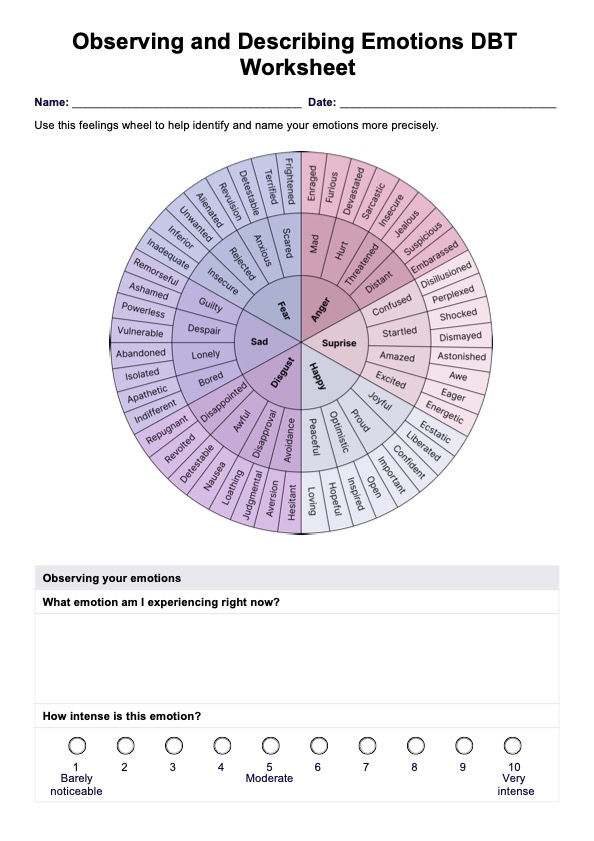
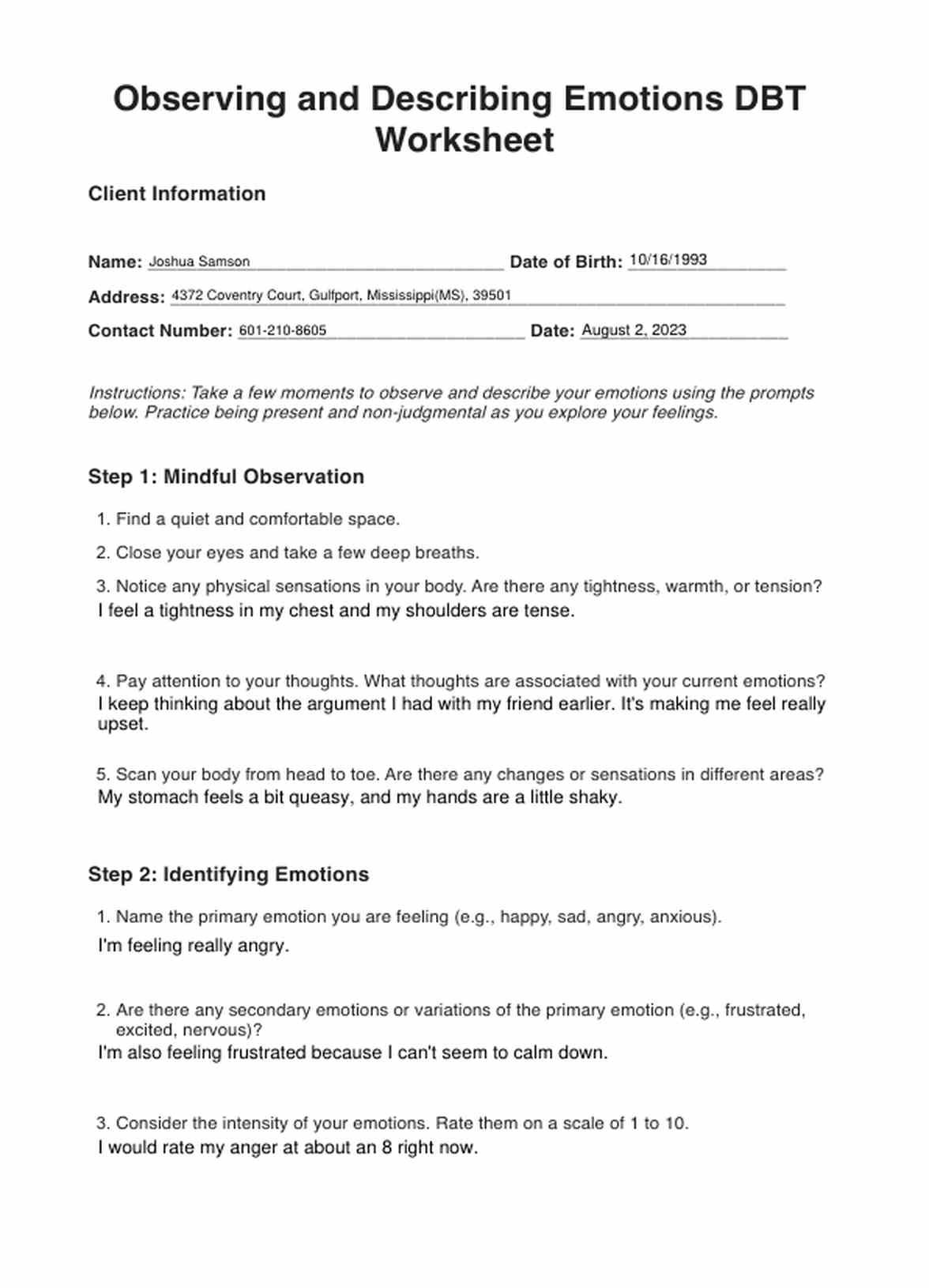

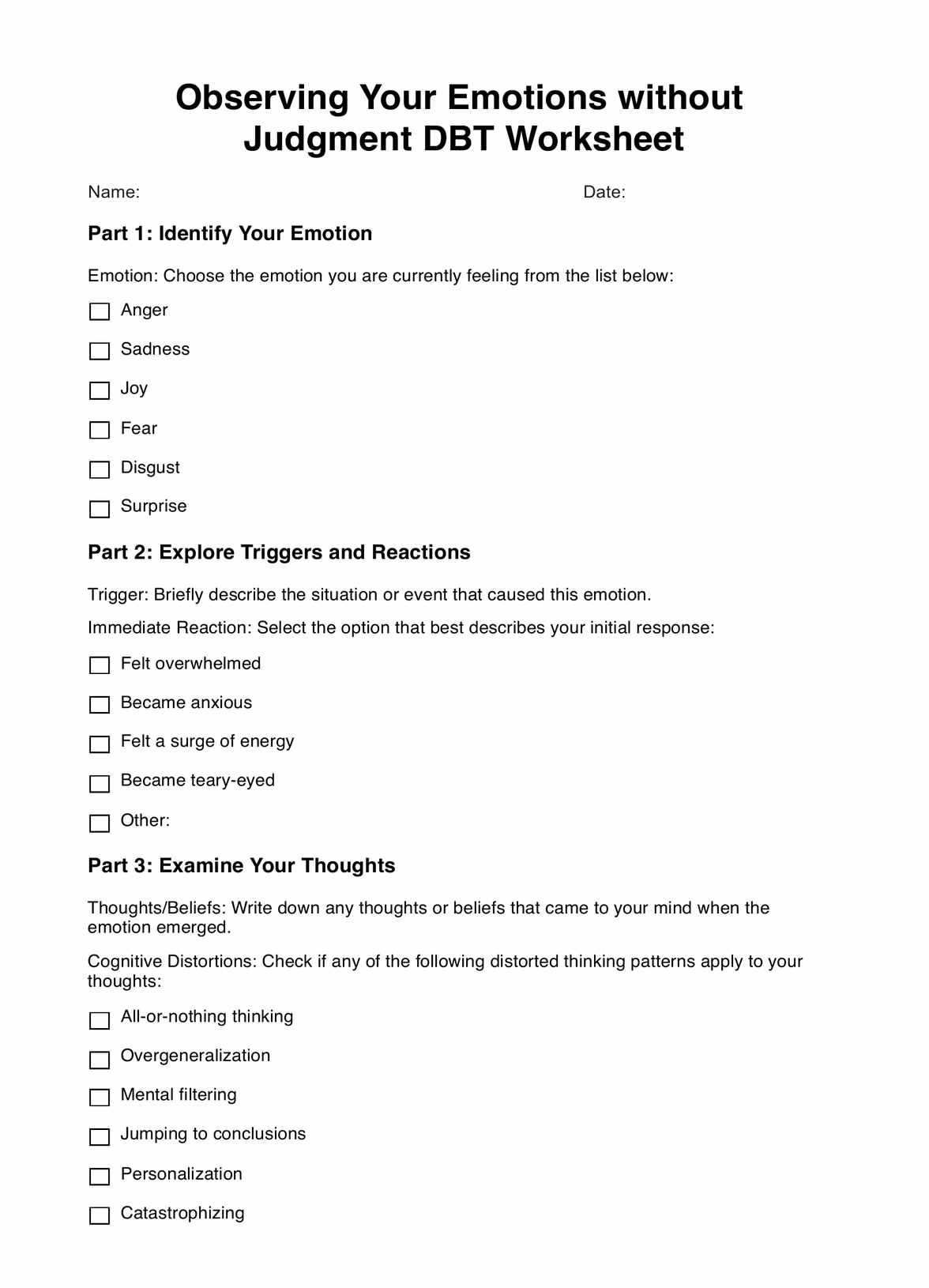














-template.jpg)





















































































